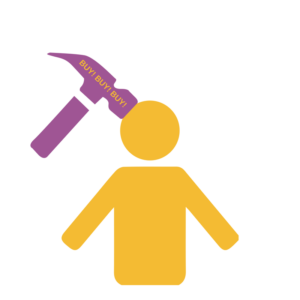Last week, renowned ad agency Ogilvy and mobile startup Victorious, published an impressive industry report called The Digital Social Contract. This 110-page paper—authored by Jeremy Katz, Robert John Davis, Alta Sparling and Bing Chen—attempts to break down the online video landscape and advise readers on how to maximize the full power of video marketing.
What Ogilvy and Victorious have created really is quite beautifully ambitious. Instead of simply pumping out a series of hackneyed tips and trips, they’ve created a sophisticated, yet easy-to-read document that aims to instruct via logic, lyricism, anecdote and inspiration. As personification of this point, look no further than how the paper begins:
The social order is a sacred right which is the basis of all other rights. Nevertheless, this right does not come from nature, and therefore must be founded on conventions.”
-Jean-Jacques Rousseau
To celebrate this aspirational undertaking, and provide a few insights into the art of video marketing, let’s take a look at some highlights from the paper…
The Mobile Generation
In the introduction to The Digital Social Contract, the paper highlights how the modern day audience has changed. This is thanks in large part to what the authors identify as The Mobile Generation:
“Who are they? They are…millennials and generation Z (or centennials) — at least most of them are. They are the Mobile Generation. They traverse information, social relationships, and professional occupations faster and more regularly than any generation before them. They have forged new digital pathways that have changed the way individuals interact with each other. And they are your customers.
“They are also the authors of a new social contract — forged in partnership with the content creators they love — that has more in common with Jean-Jacques Rousseau’s original definition and the conventions he laid out in his influential The Social Contract than anything else. If we want to earn their sustained attention and their commercial affection, we had better listen.”
And through the eyes of those from the Mobile Generation, so begins our journey into this exciting and often misunderstood digital landscape…
Connected World, Fragmented Community
Early on, the authors make the point that “…as digital communication unifies people around the world without regard to time and space, the first generation to grow up digital has splintered.”
While this may certainly be an interesting cultural phenomenon, its application to you is about more than just sociological impact. This concept—of fragmentation in a connected world—is important to acknowledge when targeting consumers.
We all now fully realize the extinction of a time when 20 million viewers would tune in to watch the same television show (and, blasphemously, all at the same time). But there seems to be a degree of dissonance between our acknowledgement of this new reality and how we go about seeking an audience. And one of this paper’s main objectives, ultimately, is to provide a bridge between what was and what is (as well as what will be).
Disruptive Medium
In a section entitled “The way we were,” the authors look to the advent and influx of television as a parallel for our current digital transition.

An Illustration from Page 17 of The Digital Social Contract
So what, one must wonder, did the burst of television mean to marketers?
“The rise of commercials changed the way brands communicated their message to their target consumers. There was no tried- and-true method to lean on, but eventually advertisers and networks settled on today’s analytics system of ratings and reach — the holy grail of TV advertising but perhaps not, as we will see, the mediums to follow.”
How does that construct compare to today’s environment? We get a closer look in the following section, “The way we are”

An Illustration from Page 29 of The Digital Social Contract
Excerpts from “The way we are”
- “Almost everyone aged 12 to 30 in first-world countries was born and raised on the Internet, making them more media- connected than any previous generation. They make up 50 percent of the U.S. population, with an estimated purchasing power of $ 150 billion..”
- “One-to-one connection between individuals within the community isn’t just possible now — it’s sewn into the fabric of our disintermediated culture. In addition, the engagement between the community and the content creator is no longer one-way.”
- “The massiveness of YouTube can blind the marketer to the true innovation of the platform. YouTube unified all the pieces that made previous social networks attractive and added something new: access to view and publish the world’s most magnetic medium — moving pictures. Television displaced radio because of the moving image. YouTube found a niche beyond TV by adding community, shared creativity, and an invitation to join the game.”
- “This makes for an interesting conundrum. Online video — no longer just YouTube, but also Vevo, Vimeo, Vine, Periscope, Snapchat, Facebook, and so on — should be candy to advertisers, but so far, the willingness of brands to make the leap can be best described as tepid. By far, most are looking
to TV for content and business models easily ported over to the Internet. That is an ill-conceived notion.”
- “Pricewaterhouse Coopers estimates that online advertising will top $ 83 billion in the U.S. by 2019 while TV, still growing, will hit $ 81 billion that same year.”
- “eMarketer predicts nearly two-thirds of the population will watch digital video this year. Digital video in general will occupy an average of 76 minutes of each of our days in 2015, and 39 of those minutes — more than half — will be spent watching on tablets or smartphones. By 2019, 67 percent of Americans (and nearly 81 percent of Internet users) will be regular digital video viewers.”
- “Among kids in the U.S. ages 12 to 17, digital video penetration is already 93 percent. People ages 18 to 24 are at nearly 96 percent, ages 25 to 34 are at 90 percent, and even generation X (now in late middle age) has penetration rates of 88 percent. Contrast that to network TV, where the average age of the U.S. primetime viewer will exceed 50 in 2015.”
- “Fixing the measurement tools and codifying analytics will take time and coordination among many parties, but advertisers can start understanding the cultural ecosystem right now. It’s all very clear to creators and their fans, but few brands have bothered to ask them how their world works. They’ve just assumed that since it looks like TV, the impact on culture is the same, too…It’s not.”
Tomorrow, in Part 2, we will continue to shine a light on The Digital Social Contract and look for insights into the art of video marketing…
Digital & Social Articles on Business 2 Community(133)
Report Post






